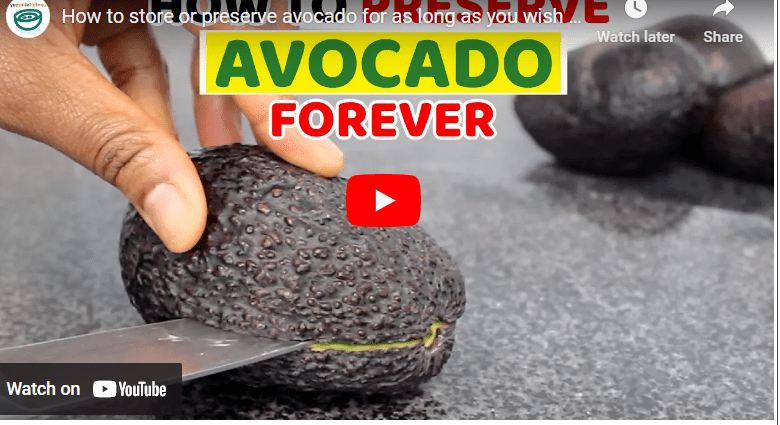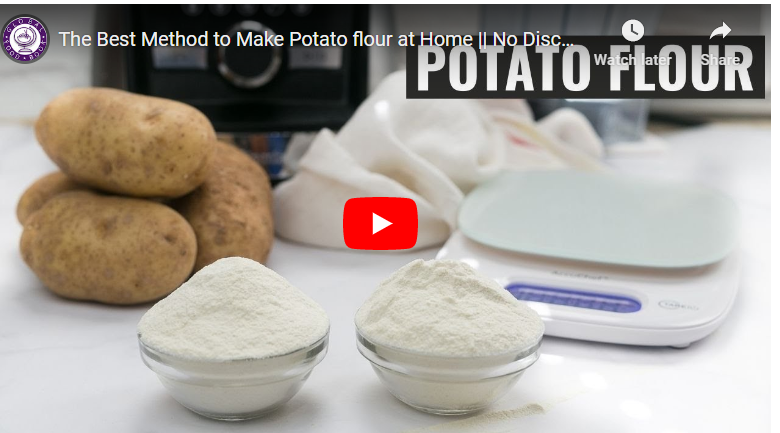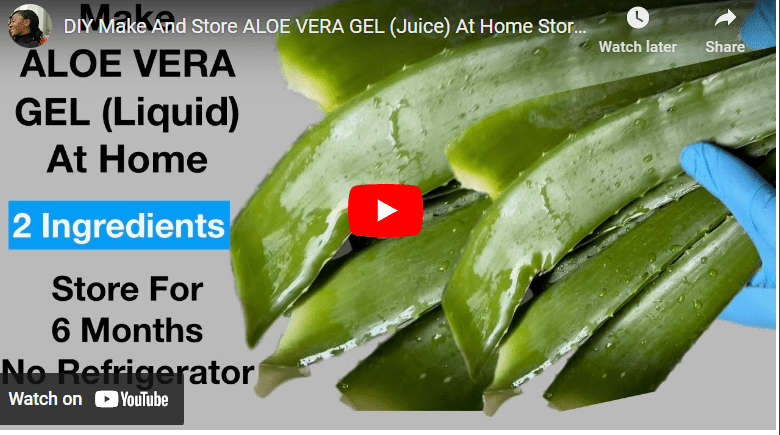Ogbono is a popular African food ingredient that is commonly used to make delicious soups and stews. It is also known as “African bush mango” or “wild mango,” and is derived from the seeds of the Ogbono tree.
Ogbono is known for its unique flavor and thickening properties, which makes it a staple in many African households.
However, ogbono is a perishable food item, which means it can go bad quickly if not stored properly. Proper preservation techniques are crucial in order to maintain the quality, flavor, and nutritional value of ogbono.
Preserving Ogbono for long storage requires a few simple steps. The first is to ensure the Ogbono is completely dry before storing it. This can be done by spreading the Ogbono on a flat surface and allowing it to air dry. Once dry, store the Ogbono in an airtight container in a cool, dry place. For longer storage, Ogbono can also be stored in the freezer for up to one year.
How to Preserve Ogbono
Ogbono is a popular Nigerian soup thickener made from the seeds of the wild mango tree. Preserving ogbono is important if you want to have it available throughout the year.
There are several methods for preserving ogbono, including drying, freezing, and canning. Ensure that you choose the method that best suit you.
Read Also: How To Preserve Aloe Vera For Long-Time Storage
By preserving ogbono properly, you can enjoy this delicious and nutritious ingredient in your cooking all year round.
Drying Methods of Preserving Ogbono
Drying is one of the most popular methods of preserving ogbono. It’s simple, affordable, and can be done at home with minimal equipment. Here’s a step-by-step guide on how to dry ogbono:
Read Also: How To Preserve Apple for Long-Time Storage
Step 1 – Remove the seeds
Start by removing the seeds from the fruit and discarding the pulp. Rinse the seeds thoroughly with water to remove any dirt or debris.
Step 2 – Dry the seeds
Once cleaned, spread the seeds out on a clean, dry surface such as a baking sheet or tray. It’s important to ensure that the seeds are not touching each other, as this can prevent proper drying.
Place the tray in a well-ventilated area away from direct sunlight and let the seeds dry for several days.
Step 3 – Check for dryness
After a few days, check the seeds to see if they are completely dry. The seeds should be hard and brittle to the touch. If they still feel soft or moist, leave them to dry for a few more days.
Read Also: How To Preserve Green Beans For Long Time Storage
Step 4 – Store the seeds
Once the seeds are completely dry, store them in an airtight container such as a mason jar or plastic container. It’s important to store the seeds in a cool, dry place away from direct sunlight.
Read Also: How To Preserve Avocado For Long Time Storage
Note that dried ogbono can be used in a variety of dishes such as soups, stews, and sauces. To use dried ogbono, simply grind the seeds into a fine powder using a blender or food processor.
Canning Methods of Preserving Ogbono
Canning is another option for preserving ogbono, especially if you have a large quantity of it. Canning involves using heat to kill off any bacteria in the food and sealing it in an airtight container to prevent spoilage. Here’s a step-by-step guide on how to can ogbono:
Step 1 – Clean And Chop The Ogbono
Start by cleaning the ogbono seeds and chopping them into small pieces. This will make it easier to blend the seeds later.
Read Also: How To Preserve Beans For Long Time Storage
Step 2 – Blend The Ogbono
Once the ogbono is chopped, blend it into a smooth paste using a blender or food processor. You should then add a small amount of water to enhance the blending process.
Step 3 – Cook The Ogbono
After blending, cook the ogbono paste in a pot over medium heat for about 20-30 minutes, stirring constantly. This will help to thicken the paste and ensure that it is cooked through.
Step 4 – Sterilize The Canning Jars
While the ogbono is cooking, sterilize your canning jars and lids. You will have to boil the jars and lids in a large pot of water for 10 minutes to properly sterilize them.
Step 5 – Fill The Jars
Once the ogbono is cooked, carefully fill the sterilized jars with the hot ogbono paste, leaving about 1/2 inch of space at the top of the jar.
Read Also: How To Preserve Cabbage For Long Storage
Step 6 – Seal The Jars
Wipe the rim of the jar with a clean cloth, then place the lid and band on the jar and tighten it. Place the jars in a canner or large pot of boiling water and process for 15 minutes.
Step 7 – Store The Jars
To store the jars, you need to fist check the seals by pressing down on the center of the lid. If the lid does not move, the jar is sealed properly. Store the sealed jars in a cool, dry place.
Freezing Methods of Preserving Ogbono
Freezing is another effective way to preserve ogbono. This method involves placing the ogbono in an airtight container and storing it in the freezer until you’re ready to use it. Here’s how to freeze ogbono:
Read Also: How To Preserve Carrot For Long Time Storage
Step 1 – Clean And Chop The Ogbono
Start by cleaning the ogbono seeds and chopping them into small pieces. This will make it easier to blend the seeds later.
Step 2 – Blend The Ogbono
Once the ogbono is chopped, blend it into a smooth paste using a blender or food processor. Add a small quantity of water to help the blending process.
Step 3 – Portion And Freeze The Ogbono
After blending, portion the ogbono into small portions that are enough for one recipe. Place each portion in an airtight container or freezer bag, removing as much air as possible before sealing.
Step 4 – Label And Store The Ogbono
Label each container or bag with the date and contents, then place them in the freezer. Ogbono can be stored in the freezer for up to six months.
Read Also: How to Preserve Cocoa for Long Time Storage
Advantages of Preserving Ogbono
#1. Availability
Preserving ogbono ensures that you have it available throughout the year, regardless of the season. This is particularly useful if you live in an area where ogbono is not readily available or if you want to enjoy it at any time.
#2. Convenience
Preserving ogbono saves time and effort because you don’t have to keep going to the market to buy fresh ogbono every time you need it. You can also preserve it in portions, making it easy to use in your recipes.
#3. Retains Nutritional Value
Properly preserved ogbono retains its nutritional value, ensuring that you still get the same health benefits as fresh ogbono.
Read Also: How To Preserve Coconut For Long-Time Storage
Disadvantages of Preserving Ogbono
#1. Quality
Preserved ogbono may not have the same quality as fresh ogbono. For example, dried ogbono may not be as flavorful as fresh ogbono.
#2. Storage
Preserving ogbono requires adequate storage space, particularly if you’re preserving large quantities. If you have limited storage space, it can be a challenge.
#3. Process
Preserving ogbono requires a bit of effort, time, and resources. Depending on the preservation method you choose, it may involve using specialized equipment, which may not be readily available.
Tips for Storing Preserved Ogbono
Once you’ve preserved your ogbono, it’s important to store it properly to ensure it stays fresh and retains its quality. Here are some tips for storing preserved ogbono:
Read Also: How To Preserve Cucumber For Longer Storage
#1. Label And Date Your Containers
When storing your preserved ogbono, make sure to label each container with the date it was preserved and the contents. This will help you keep track of the shelf life and ensure that you use it before it goes bad.
#2. Store In A Cool, Dry Place
Store your preserved ogbono in a cool, dry place, away from direct sunlight and heat sources. This will help prevent moisture and humidity from affecting the quality of the ogbono.
#3. Use Airtight Containers
Use airtight containers or freezer bags to store your preserved ogbono. This will prevent air from getting in and causing the ogbono to spoil.
Read Also: How To Preserve Flowers
#4. Store In Small Portions
To avoid waste, store your preserved ogbono in small portions that are enough for one recipe. This will allow you to use just what you need and prevent the rest from going bad.
#5. Check For Signs Of Spoilage
Check your preserved ogbono periodically for signs of spoilage, such as mold or a foul odor. If you notice any signs of spoilage, discard the ogbono immediately.
Factors that can Affect Preserving Ogbono
When it comes to preserving ogbono, it’s important to understand the different factors that can affect its quality, texture, and shelf life. Humidity, temperature, and storage methods are all important factors to consider when preserving ogbono.
Read Also: How To Preserve Fresh Pepper For Long-Time Storage
Humidity
Humidity can have a significant impact on ogbono preservation. High humidity levels can cause the seeds to absorb moisture, which can lead to mold growth and spoilage.
Therefore, it’s important to keep ogbono in a cool, dry place with low humidity levels. A pantry or cupboard in your kitchen can be a good storage option for ogbono.
Temperature
Secondly, the temperature is another important factor to consider when preserving ogbono. Exposure to high temperatures can cause the seeds to spoil and lose their flavor.
Therefore, it’s important to store ogbono in a cool place away from direct sunlight. A temperature range of 50-70°F is ideal for ogbono preservation.
Read Also: How to Preserve Tomatoes for Long Time Storage
Storage Methods
Finally, storage methods are also important when it comes to preserving ogbono. Different methods such as drying, freezing, and canning can all be effective ways to preserve ogbono.
Read Also: How To Preserve Lemon For Long Time Storage
However, the right method will depend on your personal preference and available resources.
Does Ogbono Spoil
Yes, ogbono can spoil if not stored properly. It is important to preserve and store it correctly to prevent spoilage.
Can I Wash Ogbono Seeds?
It is not recommended to wash ogbono seeds as it can affect the flavor and texture. Instead, use a dry cloth or brush to clean off any dirt or debris.
How To Dry Ogbono Seed
To dry ogbono seeds, first remove the pulp and allow the seeds to dry in the sun or in a dehydrator. Once fully dry, store the seeds in an airtight container in a cool, dry place.
Read Also: How To Preserve Garlic For Long Time Storage
How To Preserve Ogbono Soup
Ogbono soup can be preserved by storing it in an airtight container in the refrigerator or freezer.
How To Preserve Grinded Ogbono
Ground ogbono can be preserved by storing it in an airtight container in the refrigerator or freezer.
How To Preserve Grinded Ogbono Without Fridge
If you do not have access to a fridge, you can try drying the ground ogbono or storing it in a cool, dry place in an airtight container. However, these methods may not be as effective in preserving the ogbono as storing it in a fridge or freezer.
Read Also: How To Preserve Ginger For Long Time Storage
Conclusion
Proper preservation of ogbono is essential to maintain its flavor, texture, and nutritional value. By using the different preservation methods discussed in this article and following the tips for storing, you can enjoy ogbono in your meals for longer periods of time. So, go ahead and preserve your ogbono and enjoy this delicious African ingredient all year round!




Thank you
You’re welcome